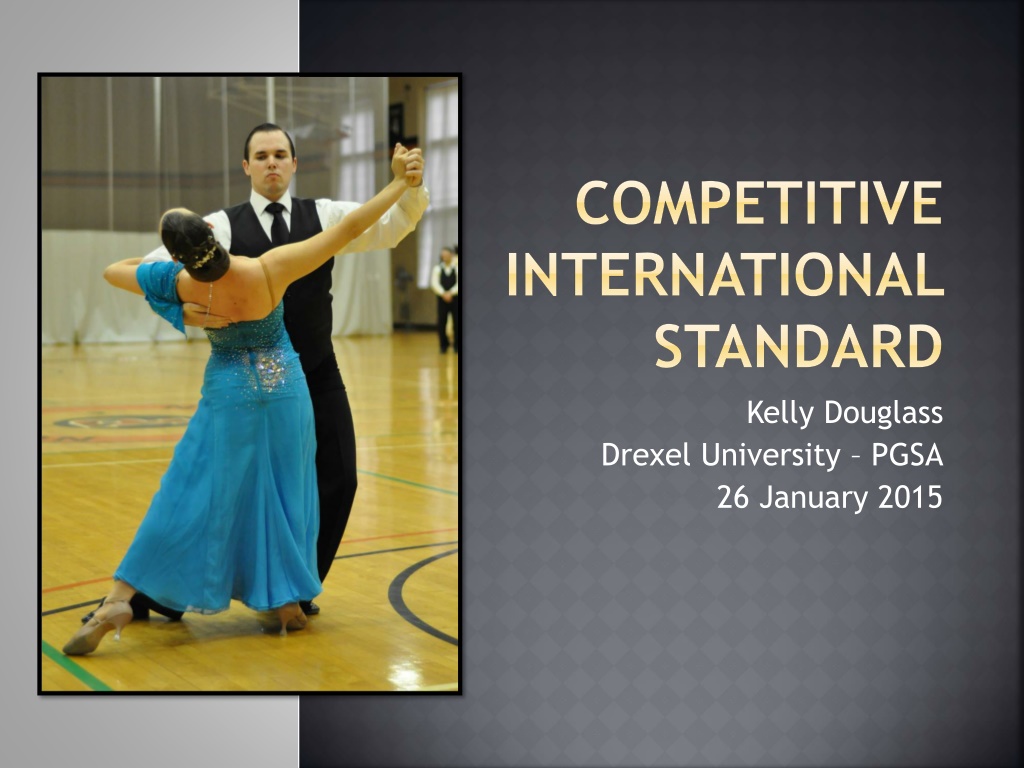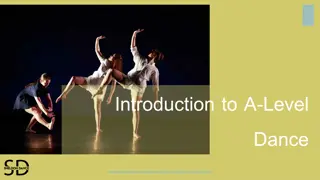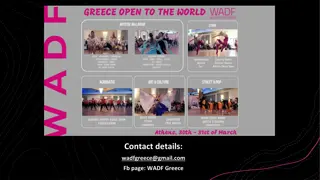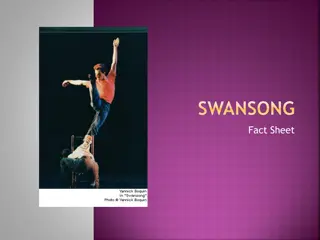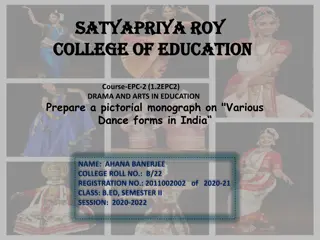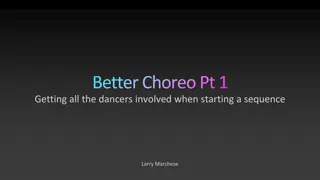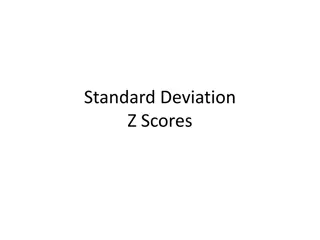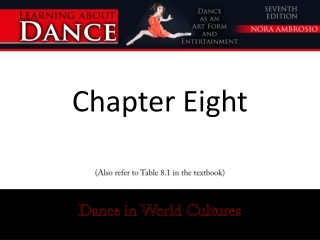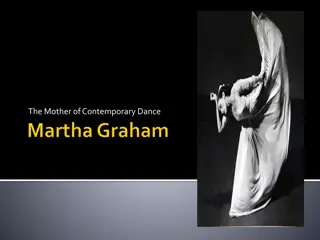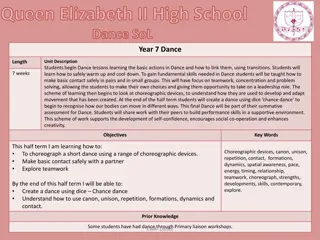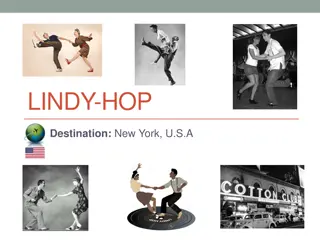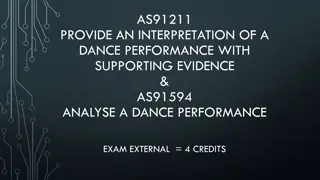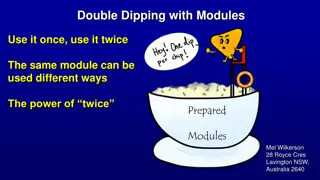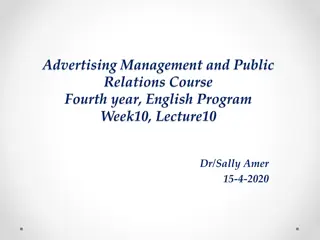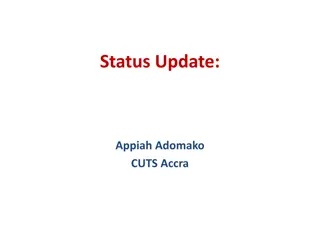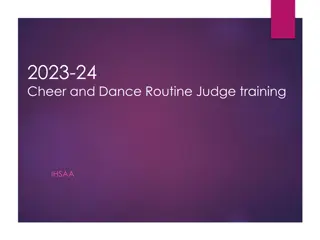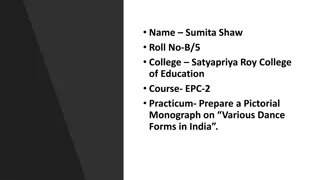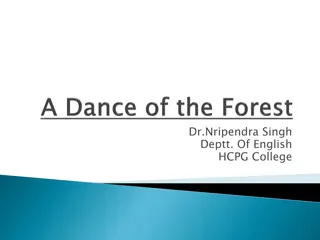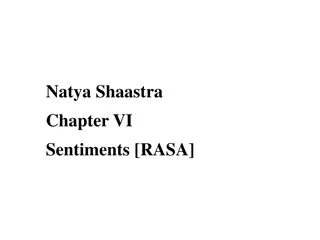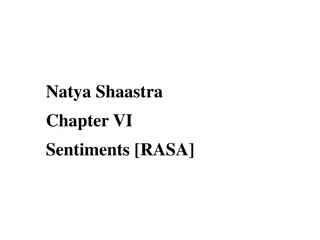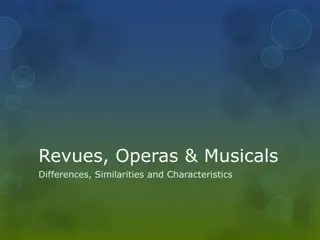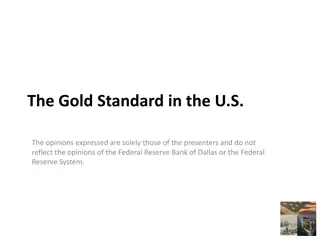Essential Techniques for Competitive International Standard Dance
Explore the world of competitive international standard dance with key techniques including posture, weight placement, heel/toe leads, and connection. Discover how swing, sway, rise and fall enhance the elegance of Standard dances, and maintain relaxed knees for fluid movement. Master the art of frame and stretch to create a strong partnership on the dance floor.
Download Presentation

Please find below an Image/Link to download the presentation.
The content on the website is provided AS IS for your information and personal use only. It may not be sold, licensed, or shared on other websites without obtaining consent from the author. Download presentation by click this link. If you encounter any issues during the download, it is possible that the publisher has removed the file from their server.
E N D
Presentation Transcript
COMPETITIVE INTERNATIONAL STANDARD Kelly Douglass Drexel University PGSA 26 January 2015
COMPETITIVE LATIN & BALLROOM International Standard Waltz Tango Foxtrot Quickstep Viennese Waltz American Smooth Waltz Tango Foxtrot Viennese Waltz American Rhythm Rumba Cha Cha Swing Mambo Bolero International Latin Rumba Cha Cha Jive Samba Paso Doble
TECHNIQUE Always keep knees slightly bent Rise and fall, swing and sway Posture, weight placement, and body alignment Toe and heel leads Floor pressure Connection Frame and stretch Slightly slower / faster music (whichever makes the dance easier :P ) Opening up! Connection while not in frame Standard Smooth
RELAXED KNEES The legs and ankles must always keep a slight bend in them.
SWING, SWAY, RISE AND FALL One of the key characteristics of Standard. Without this shaping, the dances would look very flat and boring.
POSTURE, WEIGHT PLACEMENT, AND BODY ALIGNMENT Hips must be kept under the back, over the feet. The body weight should be placed over the middle of the foot, to keep the dancer centered. The feet should be parallel, so that they can pass through the partner s feet without tripping. Shoulders and hips remain parallel.
HEEL & TOE LEADS Unlike Latin, both heel and toe leads are taken. It often depends on where you are coming from in the previous step.
CONNECTION You and your partner s shoulders should always be parallel when in both closed, parallel, and outside partner positions. You are always offset from your partner, so that your feet pass through each other. Connection allows the lead to communicate steps and shaping to the follow.
FRAME & STRETCH The most iconic component of Standard dancing, the frame allows the couple to be connected. The stretch allows the couple to appear as large as possible.
JUDGING All rounds except final judges write down the numbers of the couples they want to see in the next round Finals judges place all couples on floor 1stthrough 6th/7th/8th Criteria judges look for: Posture Timing Lines Hold Poise Togetherness Musicality & expression Presentation Power (Energy) Foot & leg action Shape Lead and follow Floorcraft
WALTZ HISTORY Developed as a country dance in the seventeenth century in Austria and Bavaria Originally seen as both vulgar and immoral when introduced in England the 1800s, due to both the close proximity and directions of the dancers. When introduced in the US in the mid-1800 s, the tempo was much more upbeat. The Boston was developed, which was much slower.
WALTZ Danced to time (down-up-up feel) Largest amount of rise and fall of all the dances 28 mpm American style differences Can break hold! Slightly faster music 28-30 mpm
WALTZ VIDEOS Steve & Kelly DWTP 2014 Steve & Kelly BADC 2014 (1stround) Nikitin - Spitsyna, RUS | 2014 World Cup STD SF W | DanceSport Total
TANGO HISTORY A large mix of cultures was present in Buenos Aires in the late 19thcentury: African beats, Indian rhythms, Latin influences, and popular music from the flatlands of Argentina. Name is either derived from the African condombe drum beat or the Latin word tangere (to touch) Dance began as a pantomime of a pimp and prostitute, hence the alternate hold and different personality. Argentine tango is related
TANGO HISTORY A large mix of cultures was present in Buenos Aires in the late 19thcentury: African beats, Indian rhythms, Latin influences, and popular music from the flatlands of Argentina. Name is either derived from the African condombe drum beat or the Latin word tangere (to touch) Dance began as a pantomime of a pimp and prostitute, hence the alternate hold and different personality. Argentine tango is related
TANGO Only dance in which the lady chases the man 4/4 timing, typically a march feel (quick-quick- slow) Minimal rise and fall 32 mpm American style differences Again, can open up! Slower music 30 mpm
VIDEOS TANGO Steve & Kelly BADC 2014 (1stround) Sodeika - Zukauskaiti, LTU | 2014 World Cup STD SF T | DanceSport Total Mirko & Edita Tango accident
FOXTROT HISTORY Introduced in 1913 by Harry Fox, though it went through many different versions (including the Castle Foxtrot) throughout the last century. Very versatile can be danced to a wide variety of music styles and tempi. Original Foxtrot was much faster than it is today it was the first dance to introduce the slow count. The English developed the Slow Foxtrot, which is that danced in the International style. The American version is closer to the original.
FOXTROT Slow, smooth, continuous movements 4/4 time very jazzy feel Little rise and fall, lots of swing and sway 28-30 mpm American style differences Opening up! Faster music 30 mpm
FOXTROT VIDEOS Steve & Kelly BADC 2014 (1stround) Andreani - Longarini, ITA | 2014 World Cup STD SF SF | DanceSport Total
QUICKSTEP HISTORY Evolved in the 1920s from the Foxtrot, Chase G Chug, Charleston, shag, peabody, and one- step Brisk tempo, due to the ragtime jazz music popular during its development Many syncopated steps are used today, unlike the Foxtrot (its main parent)
QUICKSTEP Faster, more bouncy movements Less rise and fall than waltz, but more than foxtrot 48-52 mpm
VIDEOS - QUICKSTEP Steve & Kelly BADC 2014 (1stround) Nikitin - Spitsyna, RUS | 2014 World Cup STD F Solo Q | DanceSport Total
VIENNESE WALTZ HISTORY Emerged in the latter-half of the 18thcentury from Germany and Austria oldest of the current ballroom dances Ladies used to hold their dresses up, to avoid stepping on them (evolved into the floats now seen on all standard gowns) Originally danced in either a semi-closed or side-by-side position, and there was much more rise than there is today. First dance introduced to not involve the spectators
VIENNESE WALTZ Either 3/4 or 6/8 time Minimal rise and fall lots of sway Only 7 steps in the syllabus! 56-58 mpm American style differences Slower music 53- 54 mpm
VIENNESE WALTZ VIDEOS Steve & Kelly BADC 2014 (Semifinal) Lusin - Busheeva, GER | 2014 World Cup STD SF VW | DanceSport Total Mirko & Edita Foxtrot in V. Waltz
PRE-BRONZE & BRONZE SYLLABUS Walk Progressive side step Progressive link Closed promenade Rock turn Open reverse turn, lady outside Back cort Open reverse turn, lady in line Progressive side step reverse turn Open promenade L.F. and R.F. Rocks Natural twist turn Natural promenade turn
SILVER & GOLD SYLLABUS Promenade link Four step Back open promenade Outside swivels Fallaway promenade Four step change Brush tap Fallaway four step Oversway Basic reverse turn The chase Fallaway reverse and slip pivot Five step Contra check
ADDITIONAL VIDEOS Steve & Kelly Waltz / Tango QF (BADC 2014)
